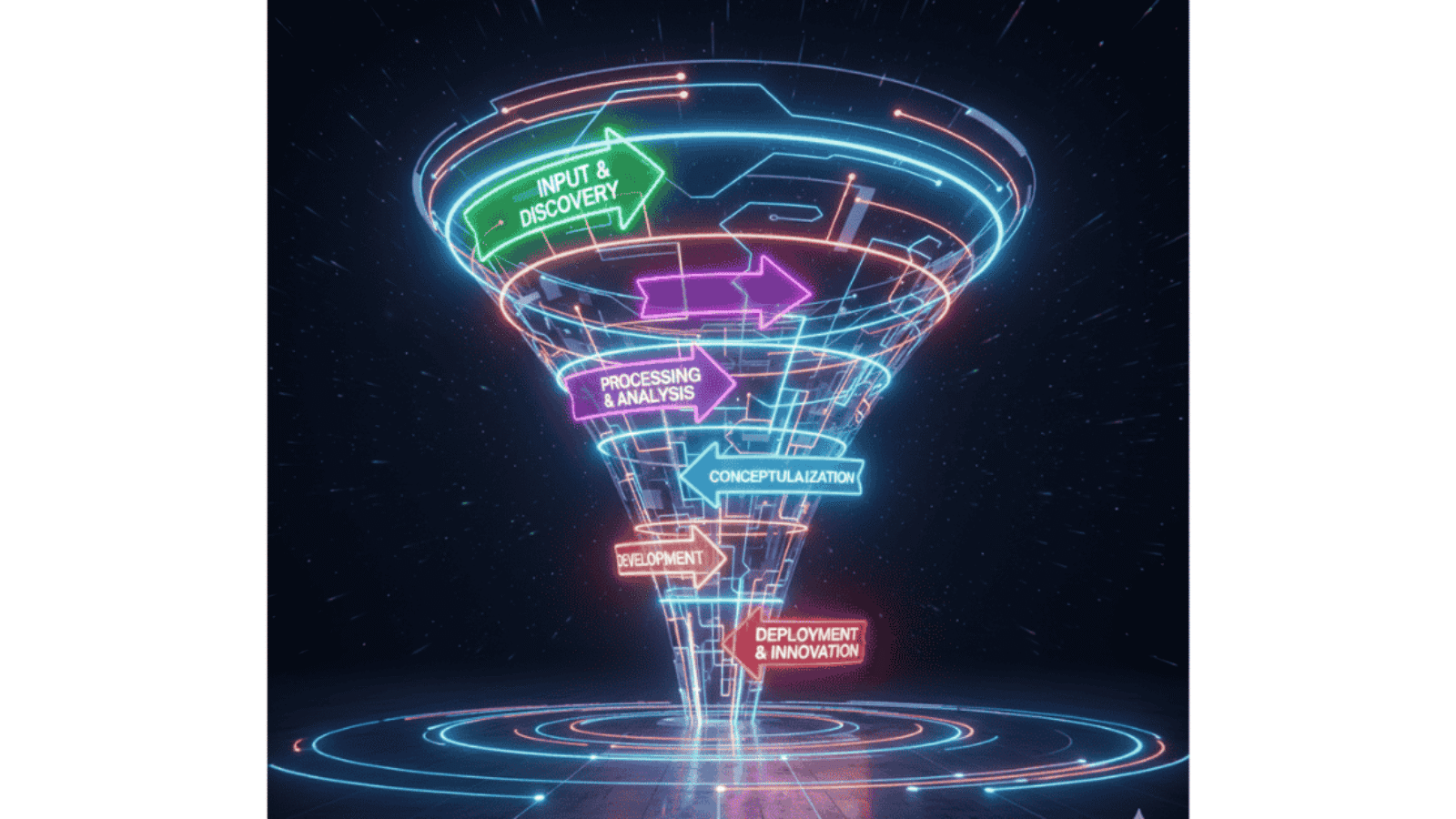Understanding how people move from discovering your business to becoming customers is one of the most important parts of growth. Yet many businesses skip this step. They focus on activities — ads, posts, emails — without understanding the structure behind why people buy.
A sales funnel gives you that structure. It maps out each stage of the customer journey — from awareness to consideration to decision. It helps you see what’s working, where interest fades, and how to guide people toward a purchase with clarity.
When you understand your funnel, you stop relying on random tactics and start building a process. You know where to focus, how to engage, and what needs improvement. This turns your marketing into a system that grows with your business — not a collection of experiments.
In this guide, you’ll learn what a sales funnel is, how do sales funnel work, and why they matter for every business — from early-stage startups to established brands. You’ll see how to build one step by step, how to identify weak points, and how to make it convert better with content, trust, and optimization.
By the end, you’ll have a clear, actionable understanding of how do sales funnel work and how to design one that helps more people move from “just looking” to becoming loyal customers.
Table of Contents
Meaning of How Do Sales Funnel Work
The phrase “How do sales funnels work?” asks how a sales funnel operates or functions—essentially, how a business guides potential customers from first hearing about a product to making a purchase.
It’s about understanding the steps or stages a customer goes through and how the business influences them at each stage to increase the chances of a sale.
In simple terms: it’s asking, “What happens at each stage of a sales funnel, and how does it turn prospects into buyers?”
What Exactly Is a Sales Funnel and Why Should You Care?
A sales funnel is a defined, step-by-step process that tracks how a person moves from first learning about your business to becoming a paying customer. This is not just a theory—it’s a clear framework that shows what happens between initial awareness and a completed purchase.
Every business operates through a funnel, whether it’s intentional or not. Understanding your funnel eliminates assumptions. You can see exactly where potential customers show interest, where they drop off, and what information or support they need to make a decision.
Without a clear funnel, growth is unpredictable. You may attract visitors, but not enough will convert into buyers. A clear funnel links your marketing actions to measurable results. It allows you to identify which steps are effective, which are failing, and where improvements can generate more revenue.
A sales funnel matters because every customer follows a path before purchasing. Mapping that path gives you control over the process. Whether you operate a local business or a global brand, a structured funnel ensures your time, budget, and content focus on the activities that actually drive conversions.
How Do Sales Funnel Work to Guide Your Customer’s Journey in Real Life?
A sales funnel provides a clear framework for understanding how potential customers interact with your business at each stage. It shows how a sales funnel works to guide the customer’s journey, turning individual actions into a predictable process that leads to purchase.
In the first stage, customers are exploring. They are trying to understand what your business does and what problem you solve. Your role is to provide value through blogs, ads, videos, or other content that clearly explains your solution.
In the middle stage, customers are evaluating options. They seek information to compare and assess your offering. This is where case studies, testimonials, and comparison pages are most effective.
In the final stage, customers make a decision. They require clear pricing, confidence in your solution, and a seamless purchase process.
Without a sales funnel, communications can be misaligned. You may attempt to sell before trust is established or provide excessive detail before the customer is ready. A funnel ensures your messaging matches the customer’s mindset at each stage, moving them progressively closer to a purchase.
A sales funnel creates a structured approach, not a scattered one. You know what to communicate, when to communicate it, and why it matters, which directly improves conversions and business outcomes.
What Makes a Sales Funnel Convert at a High Rate?
A high-performing sales funnel converts consistently because every element is aligned with the customer’s mindset. To achieve this, focus on the core drivers of action:
1. Offer – Your product or service must solve a concrete problem. Ensure the value matches what your audience truly needs. Misaligned offers fail regardless of messaging.
2. Messaging – Communicate with precision. State benefits clearly, back claims with evidence, and avoid ambiguity. Every word should move the prospect closer to a decision.
3. Proof – Provide verifiable evidence. Customer reviews, testimonials, and performance metrics increase credibility and reduce hesitation.
4. Ease – Remove friction at every stage. Streamline forms, clicks, and interactions to make the path to purchase effortless.
5. Trust – Establish confidence immediately. Display secure payment options, transparent refund policies, and clear contact channels.
6. Urgency – Use time-sensitive offers selectively and authentically. Genuine urgency accelerates decisions; false urgency erodes trust.
7. Follow-up – Re-engage prospects who drop off. Automated emails and retargeting campaigns recover lost opportunities and maintain momentum.
Incremental improvements in clarity, design, or process often produce disproportionate gains in conversion. A sales funnel is not just a pathway—it is the framework that converts intention into revenue.
Where Do Most Sales Funnels Fail—and How Can You Fix Yours?
Sales funnels fail when one stage does not align with the next. Understanding how a sales funnel works to guide your customer’s journey allows you to pinpoint gaps that disrupt flow and reduce conversions.
Common Issues and Solutions:
Wrong audience – Attracting people who have no interest in your product lowers conversion rates. Solve this by refining targeting and clarifying messaging to reach the right prospects.
Weak nurturing – Leads lose interest when follow-up is absent or irrelevant. Address this by delivering helpful, consistent content through emails, messages, or retargeting campaigns.
Complex checkout – Long forms, unclear pricing, or confusing steps discourage purchases. Fix this by simplifying the process and displaying costs clearly.
Lack of proof – Missing testimonials, reviews, or guarantees create uncertainty. Add verifiable social proof and transparent policies to build confidence.
No retention strategy – Customers make a single purchase and never return. Implement loyalty programs, regular updates, or educational content to retain engagement.
Regularly review your funnel to identify drop-off points. Use analytics to monitor behavior, test improvements, and optimize each stage to increase conversions.
Funnels fail when one stage is disconnected from the next. Understanding how do sales funnel work to handle your customer’s journey helps identify these gaps, which reduce flow and lower conversions.
How Do You Know If Your Sales Funnel Is Actually Working?
A high-functioning sales funnel demonstrates consistent progress at every stage. Understanding how a sales funnel works to guide your customer’s journey allows you to evaluate performance using key metrics.
Key Performance Indicators (KPIs):
- Conversion Rate – The percentage of people who move from one stage to the next.
- Cost per Acquisition (CPA) – The amount spent to acquire a single customer.
- Lead-to-Customer Ratio – The proportion of leads that convert into paying customers.
- Customer Lifetime Value (CLV) – The average revenue generated by a customer over their relationship with your business.
- Email Engagement – Open and click-through rates indicate the effectiveness of nurturing campaigns.
Recommended Tools:
- Google Analytics – Monitors user behavior and conversion paths.
- Hotjar – Identifies where users interact or drop off.
- HubSpot or ConvertKit – Tracks email engagement and lead performance.
Combine quantitative data with direct feedback. Ask new customers why they purchased or what almost prevented them from buying. Metrics indicate performance; feedback explains the reasons behind the results.
A properly structured funnel is predictable. You should be able to estimate the number of visitors required to meet sales targets and clearly see how a sales funnel guides the customer’s journey from first interaction to purchase.
The Role of Content in a Sales Funnel
Content is the primary tool for guiding potential customers through every stage of a sales funnel. Understanding how a sales funnel works to manage your customer’s journey allows you to align content strategically at each stage.
Top Stage (Awareness): Provide blogs, short videos, and guides that explain the problem and demonstrate your expertise.
Middle Stage (Consideration): Offer case studies, webinars, or comparison charts that highlight value, credibility, and differentiation.
Bottom Stage (Decision): Present sales pages, product demos, and testimonials to support the customer’s final choice.
Post-Purchase (Retention): Send onboarding emails, tutorials, and newsletters to maintain engagement and encourage repeat purchases.
Every piece of content should address the customer’s needs at that specific stage. Avoid trying to sell to someone who is still learning, and don’t over-explain when they are ready to make a decision. Content must align with intent.
When executed correctly, content moves customers through the funnel efficiently while establishing trust, clarity, and confidence in your brand.
Can a Sales Funnel Work for Any Business?
Yes. A sales funnel is a structured process that guides potential customers from awareness to purchase. Every business follows this path in some form. Understanding how a sales funnel works to manage your customer’s journey allows you to design each stage deliberately.
Examples by Business Type:
- Local Business: Search → Website visit → Call or in-person visit → Purchase → Review or referral
- E-commerce Store: Ad → Product page → Cart → Checkout → Follow-up email
- Coach or Consultant: Lead magnet → Discovery call → Proposal → Onboarding
- SaaS Company: Blog → Free trial → Demo → Paid plan → Retention emails
While the funnel structure remains consistent, the content, tools, and tactics vary by industry.
The critical question is not whether your business needs a funnel, but whether it has been intentionally designed. An intentional funnel allows you to measure performance, optimize each stage, and clearly understand how a sales funnel guides your customer’s journey. Without planning, results remain unpredictable.
The Future of Sales Funnels in the Age of AI
Artificial intelligence is transforming how sales funnels are designed and managed. AI enables businesses to personalize communication, automate repetitive tasks, and clearly track how a sales funnel guides the customer path.
Key Developments:
- Personalized Experiences: AI analyzes user behavior to deliver content or offers tailored to individual preferences.
- Chatbots: Automated chat systems provide instant answers and guide users to the appropriate next step.
- Predictive Analytics: AI identifies leads with the highest likelihood of converting.
- Automated Nurturing: Emails, follow-ups, and reminders can be scheduled and managed automatically.
- A/B Testing at Scale: AI tests multiple versions of pages or messages and implements the best-performing option efficiently.
AI improves efficiency and scalability, but it does not replace human strategy. Businesses must still define audience needs, craft precise messaging, and design intuitive user experiences.
The future of sales funnels combines automation, personalization, and data-driven decision-making to maximize conversions and optimize results across every stage of the customer path.
Final Thought on How do Sales Funnel Work
A sales funnel is not a temporary notion; it is a fundamental framework that explains how interest converts into action. Analyzing how a sales funnel works to direct the customer process provides insight into customer needs at every stage. This knowledge allows you to identify weak points, influence decisions, and plan growth using data rather than unverified conclusions.
Whether you are launching a business or scaling operations, a structured funnel transforms marketing efforts into measurable results. Every business benefits from tracking how customers progress—from initial contact to purchase and beyond.


